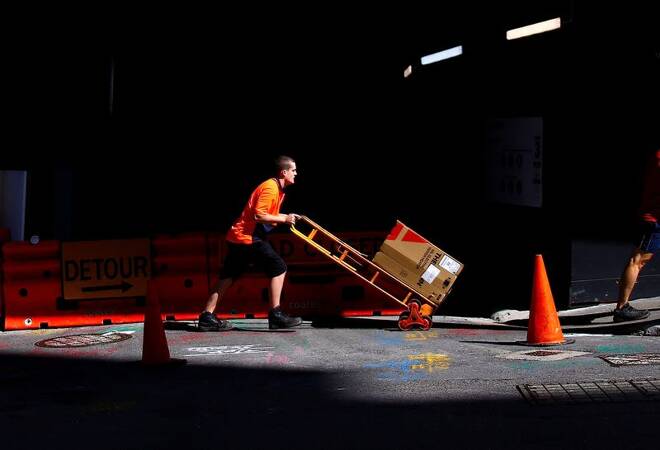Advertisement
Advertisement
Australian employment jumps in May as labour market tightens
By:
By Wayne Cole SYDNEY (Reuters) - Australian employment rebounded strongly in May while the jobless rate held at 50-year lows as more people went looking for work, an encouraging sign the economy can withstand the higher interest rates needed to contain runaway inflation.
By Wayne Cole
SYDNEY (Reuters) – Australian employment rebounded strongly in May while the jobless rate held at 50-year lows as more people went looking for work, an encouraging sign the economy can withstand the higher interest rates needed to contain runaway inflation.
Figures from the Australian Bureau of Statistics on Thursday showed net employment surged 60,600 in May from April, when it edged up just 4,000. That far surpassed market forecasts of a 25,000 rise and brought gains for the year to a heady 386,100.
The jobless rate held at 3.9% in May, when analysts had looked for a dip to 3.8%, but only because the participation rate unexpectedly jumped to a record high of 66.7%.
There were also clear signs the labour market was getting tighter with underemployment dropping to the lowest since 2008 and promising to boost wages over time.
The underutilisation rate, which adds unemployment to underemployment, fell to its lowest since 1982 at 9.6%.
The labour market has been one of the strongest sectors of the economy in recent months and a key reason the Reserve Bank of Australia (RBA) felt confident enough to raise interest rates this month by an outsized 50 basis points to 0.85%.
In a rare appearance on television this week, RBA Governor Philip Lowe underlined the importance of low unemployment.
“There’s a big backlog of construction work to be undertaken and the number of job vacancies is extraordinarily high, so people can be confident the jobs will be there and in that environment people will keep spending,” Lowe said.
That encouraged market expectations of further half-point rate hikes in July, August and September, with rates seen reaching an eye-watering 3.5% by year end.
The urgency for action was highlighted by the U.S. Federal Reserve which lifted rates by 75 basis points on Wednesday in the biggest hike since 1994.
However, the prospect of sharply higher borrowing costs coupled with a two-decade high in inflation has already seen consumer confidence dive to recession lows.
Australian households owe a record A$2 trillion ($1.4 trillion) in mortgage debt and face paying hundreds of dollars extra in repayments.
“We believe the RBA will get a lot of mileage out of its previous and forthcoming interest rate increases,” said Harry Ottley, an economist at CBA.
“We would expect these poor consumer sentiment figures and rising interest rates to dampen spending throughout the second half of 2022.”
($1 = 1.4249 Australian dollars)
(Reporting by Wayne Cole; Editing by Shri Navaratnam and Richard Pullin)
About the Author
Reuterscontributor
Reuters, the news and media division of Thomson Reuters, is the world’s largest international multimedia news provider reaching more than one billion people every day. Reuters provides trusted business, financial, national, and international news to professionals via Thomson Reuters desktops, the world's media organizations, and directly to consumers at Reuters.com and via Reuters TV. Learn more about Thomson Reuters products:
Advertisement
